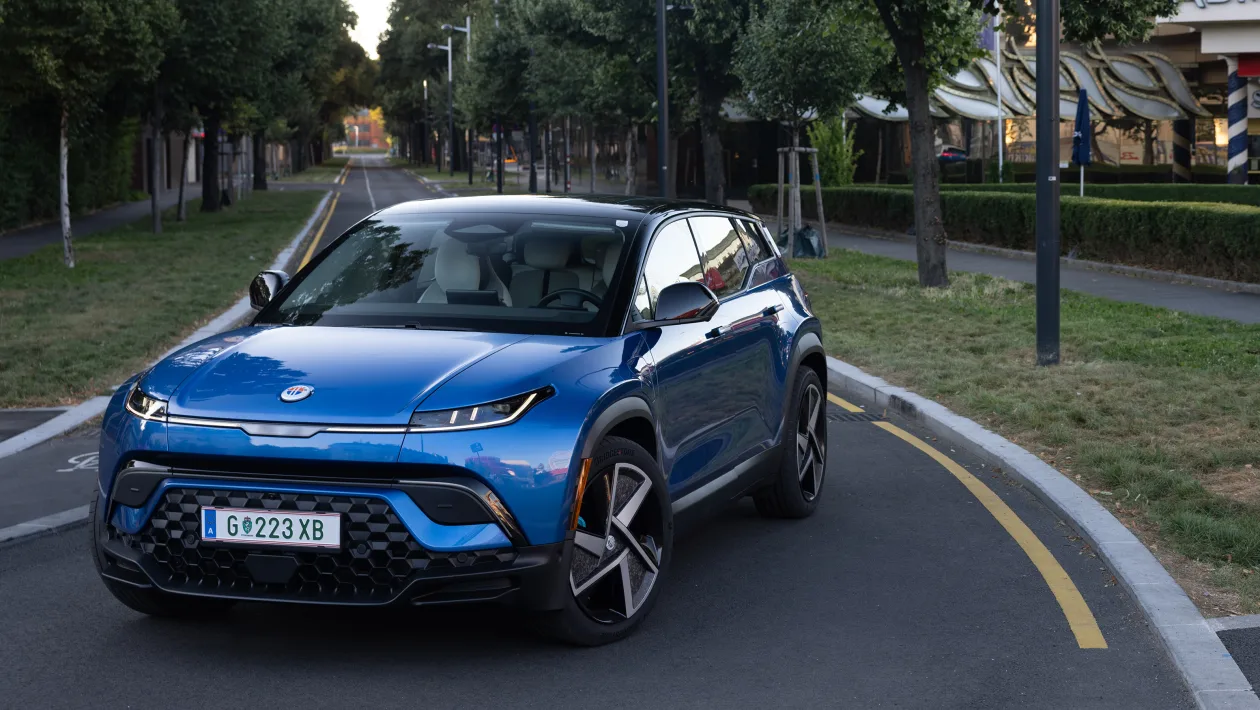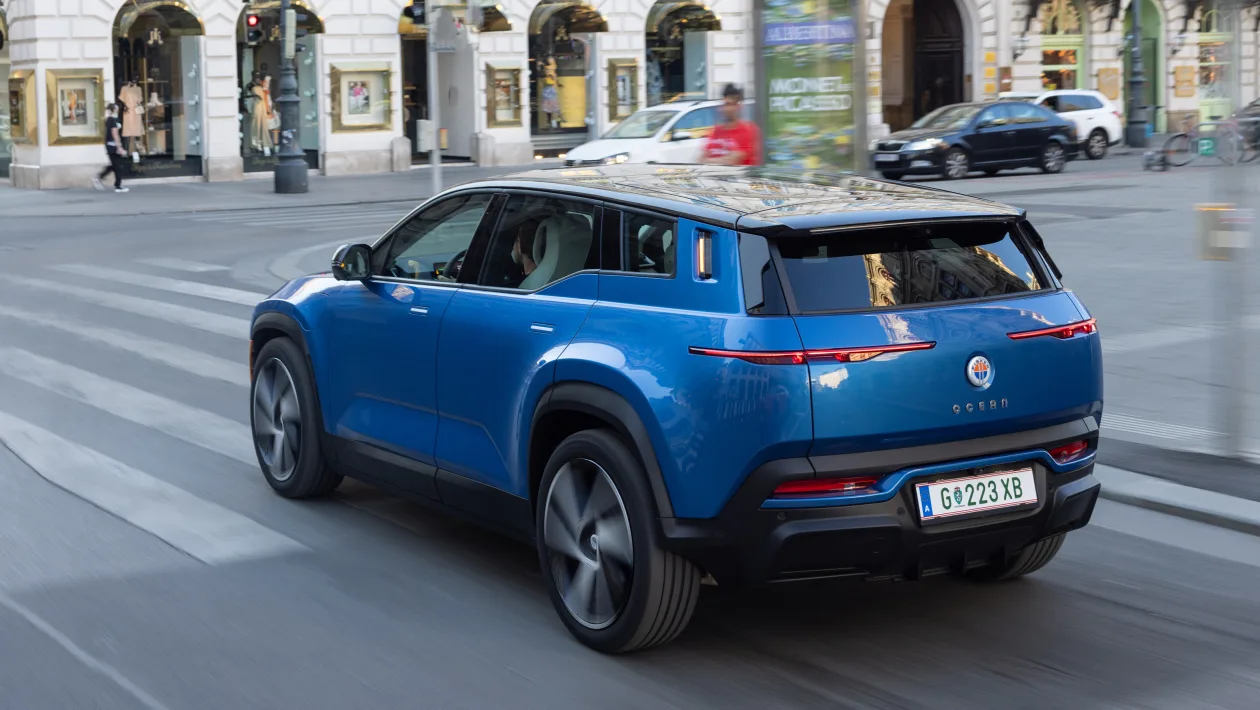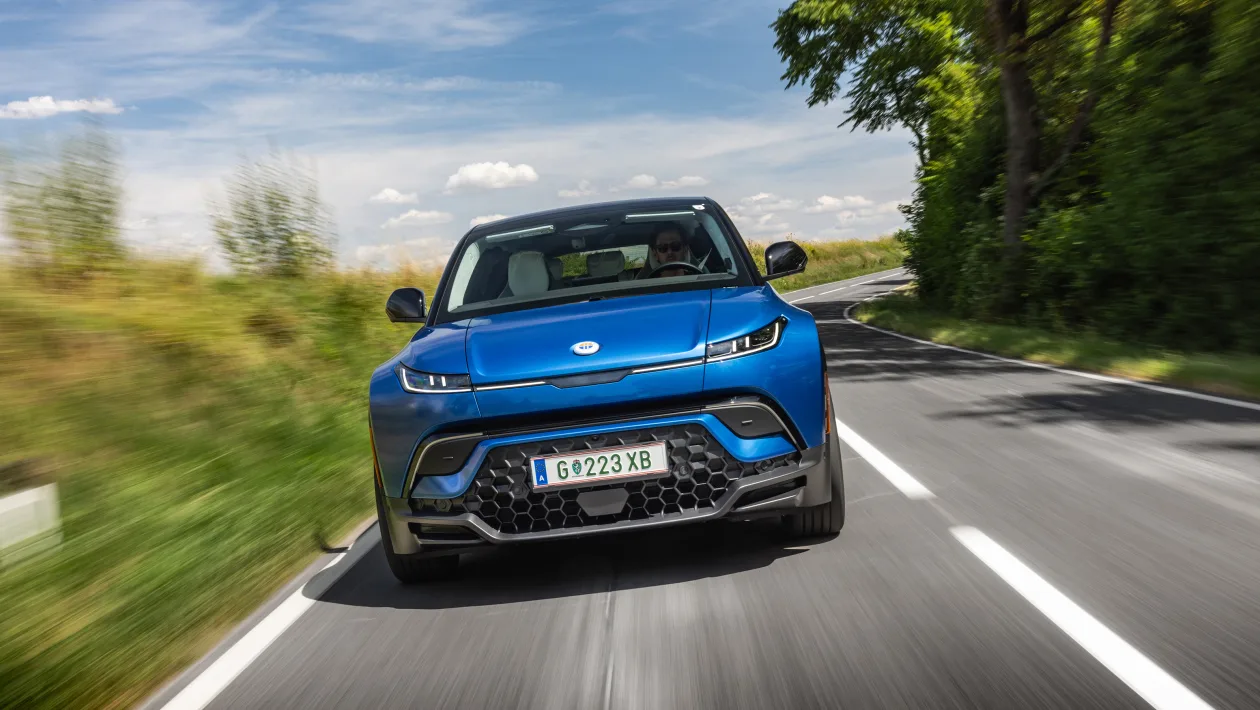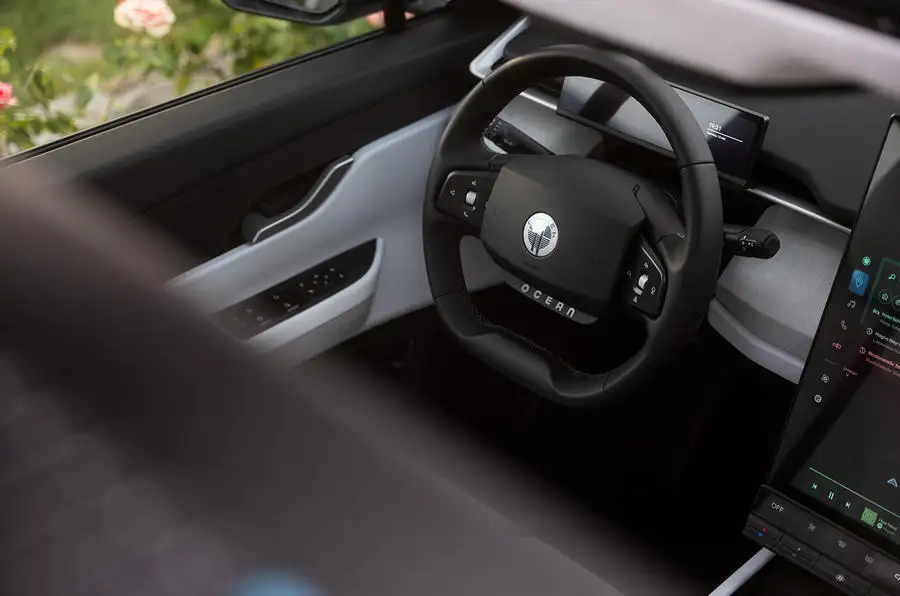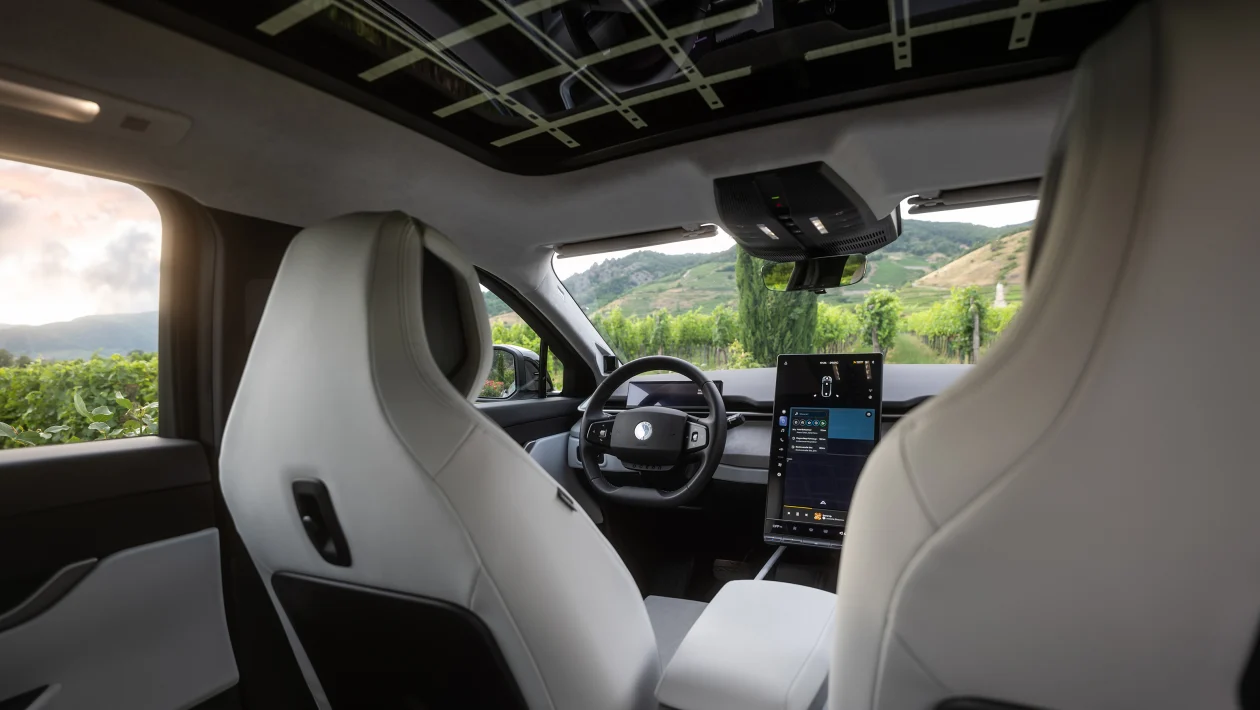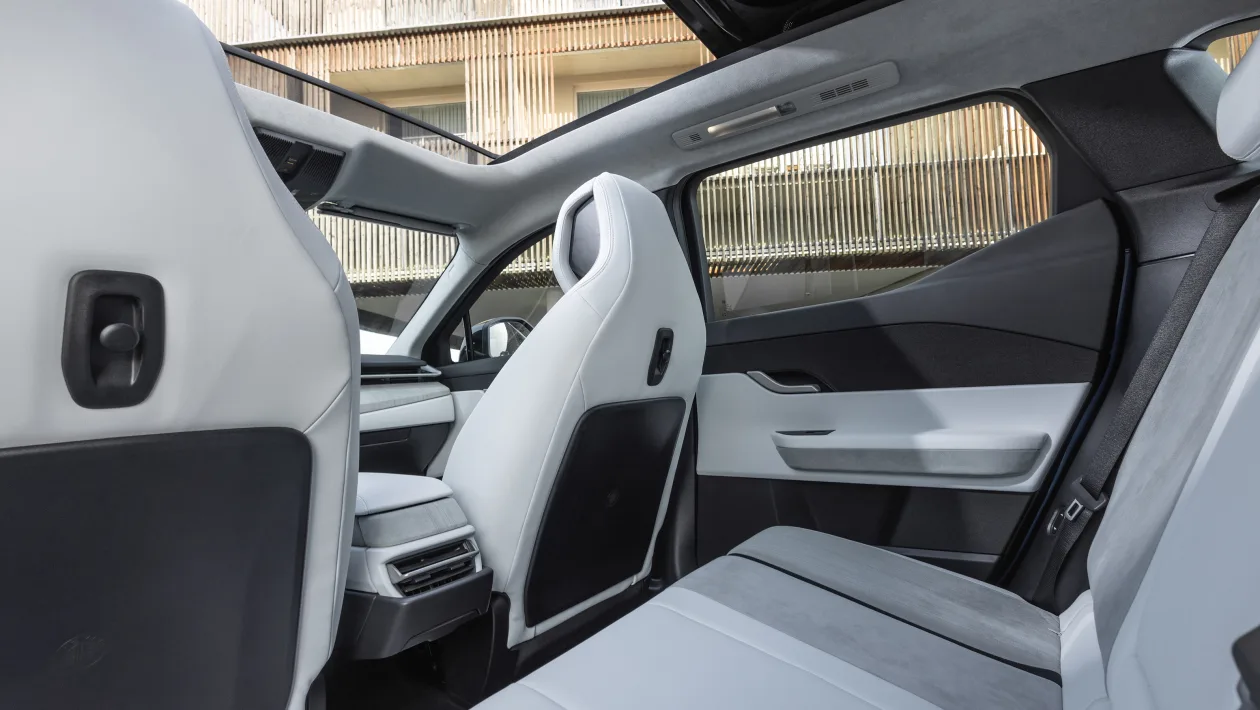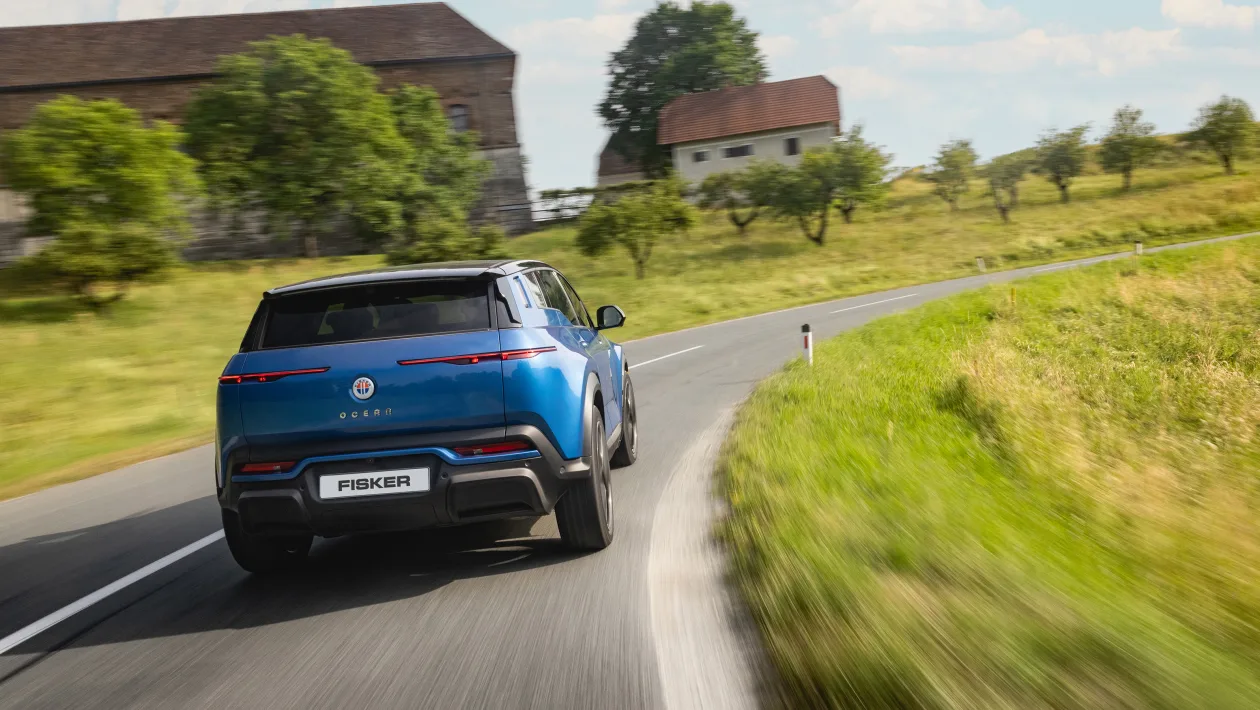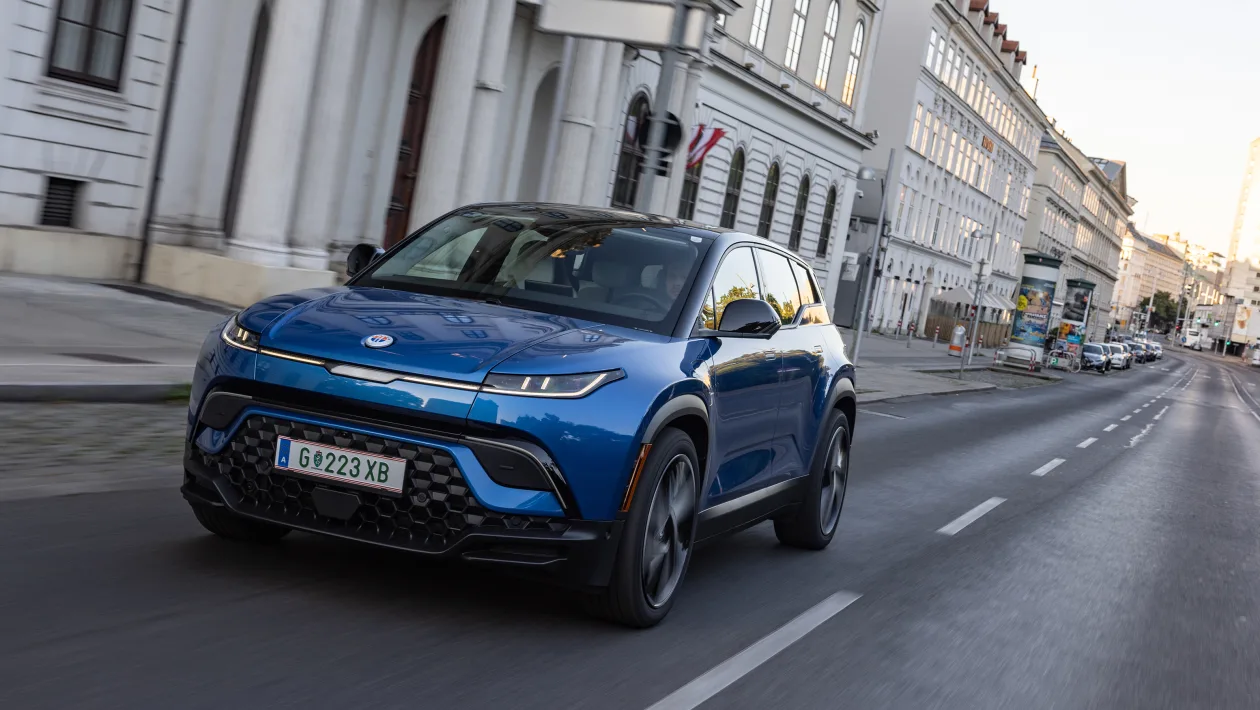Californian-based EV brand Fisker goes after style-savvy, range-conscious buyers with its first production model.
As the struggles of so many car makers to ignite the sales growth of their electric car lines continue to show, there’s still plenty of need for reassurance among those looking to buy their first EV.
While people who’ve already made the leap may argue it differently, many still see electric cars, which cost more than their ICE equivalents, as having potentially problematic usability for those who can’t depend on easy home charging.
There is one pungently American feature about the Fisker Ocean: a ‘taco tray’ that folds out of the centre armrest, which is only to be used when the car is parked – but only seems just about substantial enough to support a typical fast food order. Maybe it’s just my appetite talking; but you’d have to remember not to order too many sides.
The Fisker Ocean, the emergent American-based EV specialist’s first production car, engages with those perceptions head on. Designed in California but built by Magna Steyr in Austria (on the same line that, until recently, cranked out the BMW 530e), this is an unexpectedly compact, European-flavoured SUV that leads with its smooth-surfaced, sophisticated design. In the metal, it looks a little like a slightly squatter, stretched Range Rover Evoque – but it certainly escapes the awkward proportions of so many of its electric rivals, and is distinctive enough to stand out in its own right. It’s a good-looking car, this – just as you’d expect given the reputation of the eminent car designer whose name adorns its model badge.
But while the Ocean’s wide-stanced, sharp-featured styling is typically seen on cars with ‘premium-brand’ associations, Fisker actively avoids such a classification. It sees customers moving away from the automotive nameplates associated with consumerist ‘aspiration’ over the past half-century and towards new ones that better embody their personal values. Then again, if it only asks those who come and knock on its door in the first place, so it probably would.
Fisker is not confirmed for Australia yet, but it is launching across the US and Europe for now.
Sustainability is the company’s mantra. Fisker wants to make the most sustainable electric cars in the world and (admittedly only according to the company’s own lifecycle emissions study) claims the Ocean has a lighter ‘whole lifecycle’ carbon footprint than the Polestar 2 and Volvo XC40 Recharge – as well as most combustion-engined equivalents when judged solely on their fuel-burning daily usage phase.
The Ocean’s interior has been designed with a focus on that resource-light footprint. There’s more than 50kg of recycled content in the car, from carpets to seat fabrics made of recaptured sea plastics. Its fascia mouldlings are all unpainted and uncoated, so they’re simpler and quicker to manufacture and easier to recycle. Its textiles avoid complicated stitching and decoration. You can’t see the door speakers because they’re mounted on the ‘B-side’ of the panel, which reduces manufacturing complexity.
In isolation, it may sound a little like a convenient excuse not to compete with the European brands on perceived quality, but Fisker’s company-wide focus on sustainability seems to run much too deep to be about cost-saving.
Neither does it actually make the Ocean look or feel flimsy or cheaply put together. Sure, there’s a sense of simplicity, and slight plainness, about bits of the cabin design, but given the car’s price positioning (which we’ll come to), it’s all easily acceptable. The cabin has a tidy, pared-back look and layout, with a column-mounted shift selector, simple digital instrumentation, and most secondary controls contained within the 17.1-inch portrait-orientated touchscreen console. There are separate physical controls for the heating and air-con, though, as well as for the windows and sunroof.
And, thanks to Henrik Fisker’s aim to give each of his cars at least four unique features – and the man’s own sense of flamboyance, no doubt – the Ocean also has some interesting points of difference. How many times have you wondered why EVs don’t come with solar panels to harvest sunlight energy? Most of their makers have so far claimed they’d add too much weight, cost too much and contribute too little power to be worth their place but, once again, Fisker thinks differently.
So range-topping Oceans get a two-panel SolarSky roof, developed by supplier Webasto, which the company claims adds between 2400 and 3200km of electric range over a year’s usage (in, ahem, a fairly sunny environment). That’s not enough to be an alternative to actually plugging the car into the mains, clearly, or to extend its range much during summer touring. But if it’s free energy, they say, why not grab it?
‘California mode’ is another of Fisker’s brainwaves. At the touch of a button, the car simultaneously opens its sunroof and fully lowers seven of the eight panes in the glasshouse (leaving only the windscreen in place), for the closest you can get to an open-air driving experience without actually removing the roof. Likewise on pricier trims, the car’s infotainment screen can rotate to a landscape orientation when parked, to allow you to stream your favourite TV shows while you wait for it to charge. (Fisker calls this ‘Hollywood mode.’) They’re novel features, both: a laugh, if a bit gimmicky.
But the substance hasn’t been neglected elsewhere. Fisker’s intention was to bring value to the family EV class with this car – and, whether you’re buying an Ocean at an entry- or mid-level price, it does just that.
During our testing, it proved itself well capable of 600-640km of range on a warm day, in mixed urban, motorway and country road driving. It’d be farther still, needless to say, the more town driving you did. This is the kind of car that plenty of people with on-street parking or apartment lifestyles could charge once or twice a week, then, at their nearest fast charger (DC charging is possible at up to 200kW) or on a nearby on-street AC charging post, using it almost as if it were a combustion-engined equivalent.
Weight is the price that the Fisker Ocean pays for all that although actually it carries it quite well. Our range-topping model was 400kg heavier than some key rivals, and while anything but slow, it does ride and handle with a clear sense of inertia, and of gentle roll, jounce and sway as it deals with bumps and bends.
It’s comfortable and refined, though, and has greater suppleness, isolation and calm than a Tesla Model Y or a Ford Mustang Mach-E – because it’s not a car preoccupied with misplaced driver appeal. Steering is medium paced and weighted, and grip level stout and secure, although the car starts to nudge into progressive understeer and to depend on its electronic stability controls when hurried through corners. It drives in a way that’s more likely to appeal to Land Rover, Volvo and Mercedes regulars than BMW, Audi, Ford or Polestar exiles, I’d say. But there’s a refinement, maturity and pragmatism to the Ocean’s dynamic tuning that’s feels like it’s been engineered in at some trouble.
And the car’s value positioning doesn’t end there. If you’re happier with less range, less power and a cheaper car than our test example, the entry-level, single-motor, front-drive Ocean Sport (lithium-iron-phosphate battery, circa 70kWh) is set to offer 200kW and a WLTP-certified 443km of range from just $37,499 (AUD$55,800). Which is, let’s face it, Kia Niro EV money for a significantly larger and more useful car.
That, it seems to me, is a bit of a breakthrough for the family EV market. How is Henrik Fisker able to come at that market with such standout value? Perhaps because his is a compact, lean company unencumbered by the fixed costs of manufacturing its own cars; and perhaps because the cars themselves are directly sold online, without the support of a widespead dealer network.
It remains to be seen what the ownership experience of a Fisker might be like, of course – whether the software bugs that so commonly afflict brand-new cars might also affect this one, and if so for how long, and how the company’s service back-up might deal with them. It’s a new company, so teething problems should be expected.
But so much about this car suggests that both Fisker and its manufacturer, Magna Steyr, have taken as much care with its execution as its design, which is a heartening sign. Its pricing and range, meanwhile, should get it off to a promising start all by themselves.




